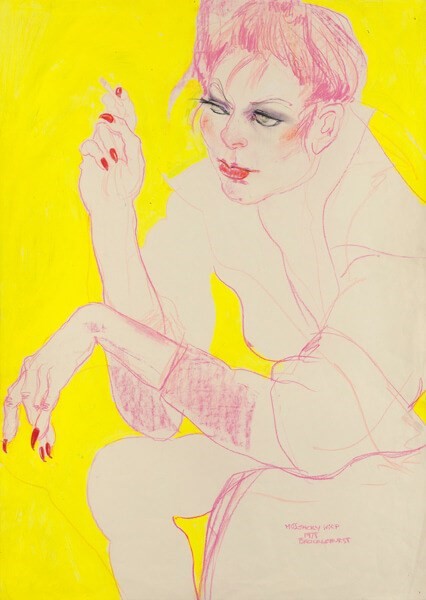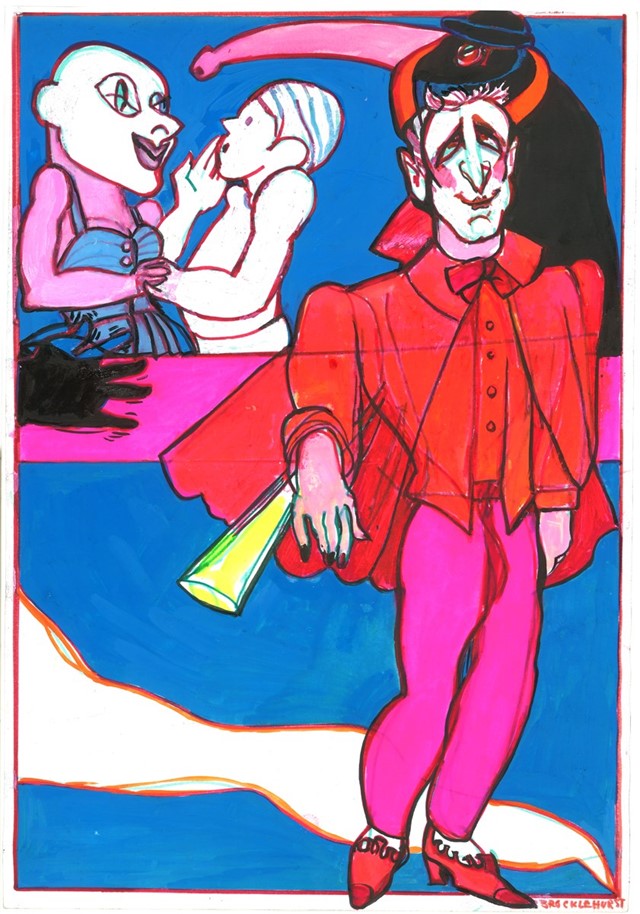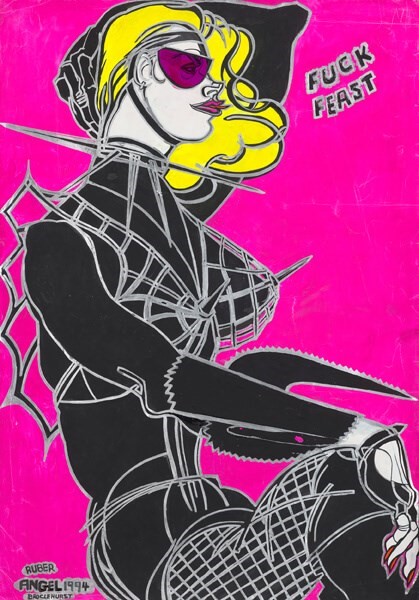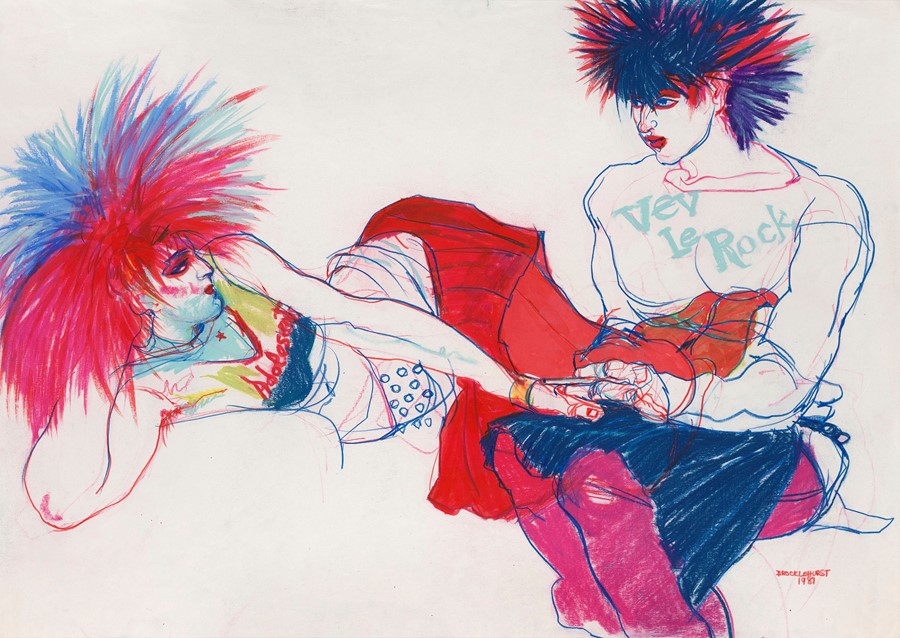As a new exhibition of Jo Brocklehurst’s work opens at the House of Illustration, we talk to co-curator Isabelle Bricknall, the artist’s long-time friend and collaborator
Throughout the 1980s Jo Brocklehurst was celebrated for her formidable portraits of punks and figures from London’s fetish scene; but her legacy as an era-defining anthropological illustrator has been greatly overlooked. Now, Isabelle Bricknall has helped create a major new show revealing her astonishing oeuvre, which embodied the spirit of a city teeming with creative energy and boundary-breaking reinterpretations of gender and sexuality. Here we talk to Bricknall about the artist behind the images.

On meeting Brocklehurst…
“I first met her when I was an MA student in Nottingham. She’d sometimes cover classes for Colin Barnes [the fashion illustrator] who was a good mate of hers, as they’d been at St. Martin’s together. But we really connected when I moved to London and I was modelling for Colin. She had popped round for afternoon tea and was gagging to draw me. She told him he had to share! It was the start of many collaborations and projects together, where I’d create experimental pieces such as futuristic body armour and she’d draw me. It was so great to meet someone who you could really trust, especially another woman; she became something of a mentor. She had so much energy and drive and was just so much fun to be around. We’d go on lots of adventures and get into lots of trouble together.”

On the fetish scene…
“Jo would often come down to the clubs – like the Skin Two Rubber Ball and Torture Garden – with Ted Polhemus [the anthropologist], which was all pretty underground, but at the same time anyone who was creative in London was there. People were experimenting with clothes, music; there were performers like Empress Stah… and the likes of Leigh Bowery, Rachel Auburn, Thierry Mugler and Jean Paul Gaultier; they couldn’t get enough of it! Jo would float around with her sketchpads and her crayons and draw all the characters there, from the sublime to the ridiculous… and I mean ridiculous! Of course she had her dark glasses and her blonde wig, which acted as a sort of barrier, as she didn’t want people to engage with her, although if someone did bother her she’d just raise an eyebrow and speak in her posh, Joanna-Lumley-like voice, which meant it was time to sod off. It would often be my job to go off and find out who it was she’d actually drawn.”

On loving colour…
“Black was not a colour as far as Jo was concerned. She banned it in her art classes until you proved you could draw. We’d often talk at length about colour theory and what it meant in our work. When you look closely you can see she’d often do her line work in several shades, but only ever added in black right at the end. She was obsessed with Schiaparelli’s shocking pink too; she used it all the time. It’s a real force, an aggressive colour, but no man would ever use it!”

On female power…
“It was a hard time to be a female artist out there on your own – well it still is – but Jo was a real ball-breaker and she knew how to have her fun. She was gorgeous, which meant men were always trying to jump on her bones and she had to bat them off. It was a deliberate decision to use the shortened version of her name, so dealers always assumed she was Jo’s pretty assistant, which amused her. Her drawings of men also had a lot of in-jokes too: take my old flatmate Iggy, who was a real trollop but very charismatic. Her drawing shows him gazing into the mirror – a classic narcissist.
Jo was always interested in revealing the feminine inside the man, and vice versa, but back then people would have thought you were mad for saying something like that. So she got everyone to play dress up, which was one of the reasons why she loved me. Her Alice in Wonderland series really played with blending genders, and her knowledge of costume and human anatomy mean she portrayed women in a truly interesting way, never boring or passive. She saw women as being fearless and instilled that in her work, which is one of the reasons why I wanted to make this exhibition a girl-on-girl affair, with curator Olivia Ahmad. I wanted to make sure I was voicing what she would have said. Jo deserves it; she was a fine lady and a bloody great artist.”
Jo Brocklehurst: Nobodies and Somebodies runs until May 14, 2017 at the House of Illustration, London.
